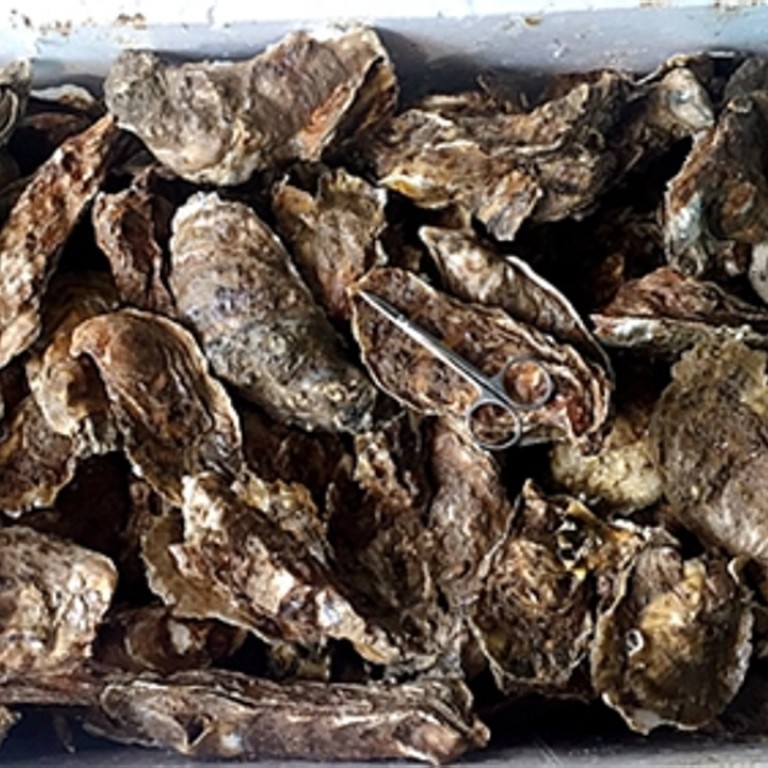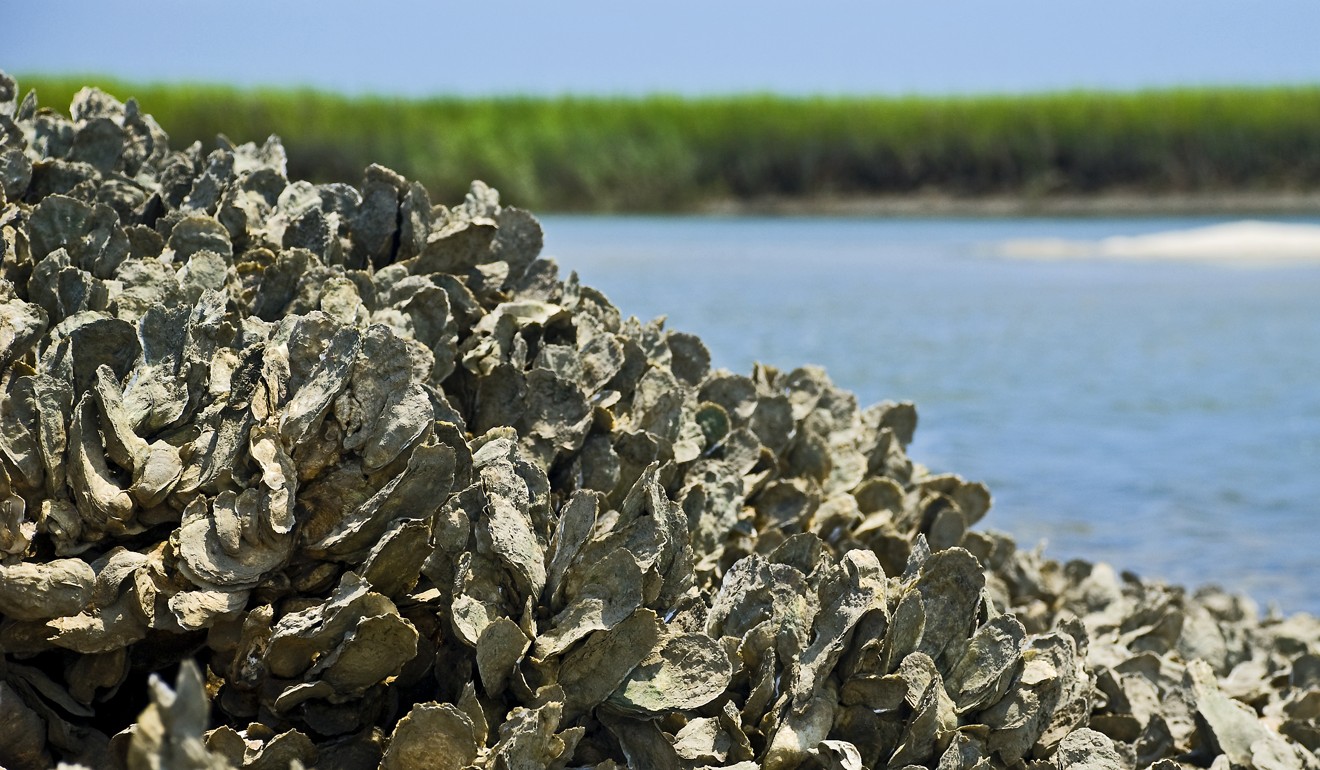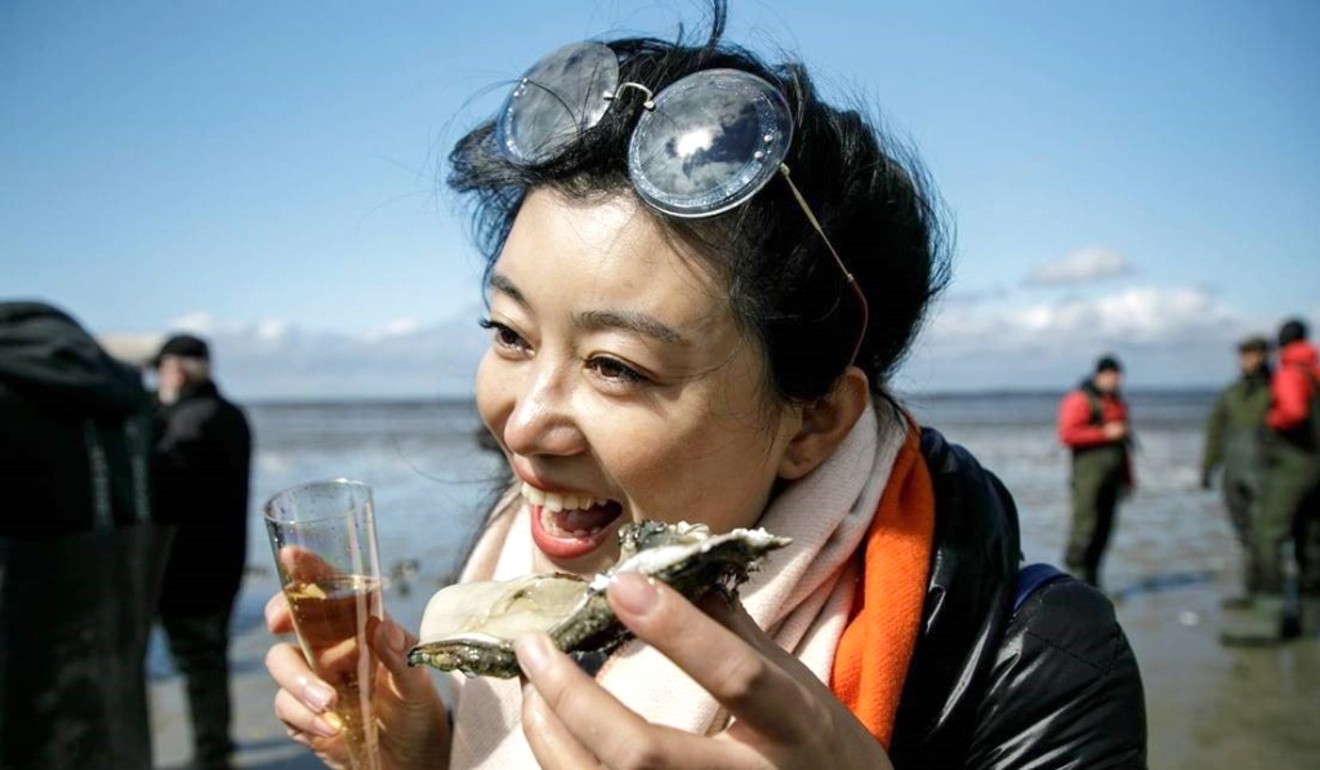
The last Chinese wild oyster and the scientists trying to keep it off the dinner table
Researchers have found the last surviving wild habitat of the Suminoe oyster and say it ‘must not end up as food’
Marine biologists say they’ve discovered the last surviving natural habitat of a species of oyster native to China in the Bohai Gulf – but they’re not saying where it is for fear Chinese foodies will destroy it.
“If the coordinates get out, it will set many mouths watering,” said Professor Li Li, researcher with the Institute of Oceanology, Chinese Academy of Sciences in Shandong province. “We have no choice but to keep it secret.”
The discovery was the result of a detailed scientific survey by a team of marine biologists from the institute, which Li headed.

The Crassostrea ariakensis,or Suminoe oyster, used to be the dominant native species along China’s coast, ranging in the 1950s from the country’s border with North Korea all the way south to Vietnam.
It often was found in huge numbers in bank-like colonies, according to early scientific surveys.
But in recent decades, human activity such over-harvesting has shrunk the oyster’s presence in the wild.
The Suminoe oyster is still farmed but was believed to be extinct in the wild north of Shanghai – until Li’s found a few clumps in the gulf and the Yellow Sea.
She said the oyster’s last wild habitat survived because it was in relatively deep water, far from prying eyes on the surface.
The researchers surveyed the waters and confirmed the reef’s location visually through deep dives, she said. The research team reported their findings to the government.
Oyster reefs, which can cover up 1 sq km, are important shelters and breeding grounds for fish. They also trap and break down pollutants carried by rivers into the sea.
Chinese woman comes up with a hot (and spicy) idea to deal with Denmark’s oyster invasion
But many of the Suminoe oyster beds were permanently destroyed by engineering projects, harbour construction and reclamation. The rest ended up in restaurants.
Li said biologists were exploring ways to protect and expand the last Suminoe oyster reef by increasing the wild species’ population.
Oyster reefs “can become a cost-effective way to clean up large-scale ocean pollutants”, she said.
Marine biologists want the authorities to ban fishing near such reefs by turning them into protected zones. But obtaining official approval for such an initiative could take time. Li said it would be a biologist’s nightmare if seafood gourmets ever found the oyster reef.
“They would just swamp it,” she said.

Li’s fears are not unfounded. China’s enormous appetite for oysters prompted the Danish embassy in Beijing to try to enlist Chinese diners to help the Scandinavian country defeat a chewy problem.
The embassy complained in a Chinese social media post that the wild Pacific oyster on the Danish coast had become an invasive species, threatening the survival of the local Limfjord oyster.
“The coasts are full of oysters, but the Danes aren’t happy at all,” the embassy wrote on its Weibo account on April 24. “Will you come to the Danish coasts for an oyster meal?”
The post accumulated more than 7 million “likes” and attracted the attention of almost every major news outlet in Chinese, prompting discussion on whether Chinese foodies could indeed be the solution to Denmark’s problem.
Chinese foodies offer help after Denmark complains about its oyster problem online
Subsequently, a Chinese woman who lives in Copenhagen on social media her story about collecting 150kg of fresh oysters from the Danish coast in four hours and cooking them for a meal with friends.
China consumes more than 4.6 million tonnes of oyster each year, according to a 2015 estimate. That was 30 times to the total annual output of France, Europe’s biggest oyster producer.
China has its own massive oyster farms but they are dominated by the Pacific variety from Japan, which are more suited to market tastes.
Nevertheless, the Suminoe is hardier than its Japanese cousin and can endure wide fluctuations in temperature.
Shi Weiyang, a marine biologist with the Ocean University of China, said the Chinese oyster could withstand many diseases.
“They discovered a national treasure,” said Shi, who was not involved in Li’s study. “These wild oysters must not end up as food,” he said.

